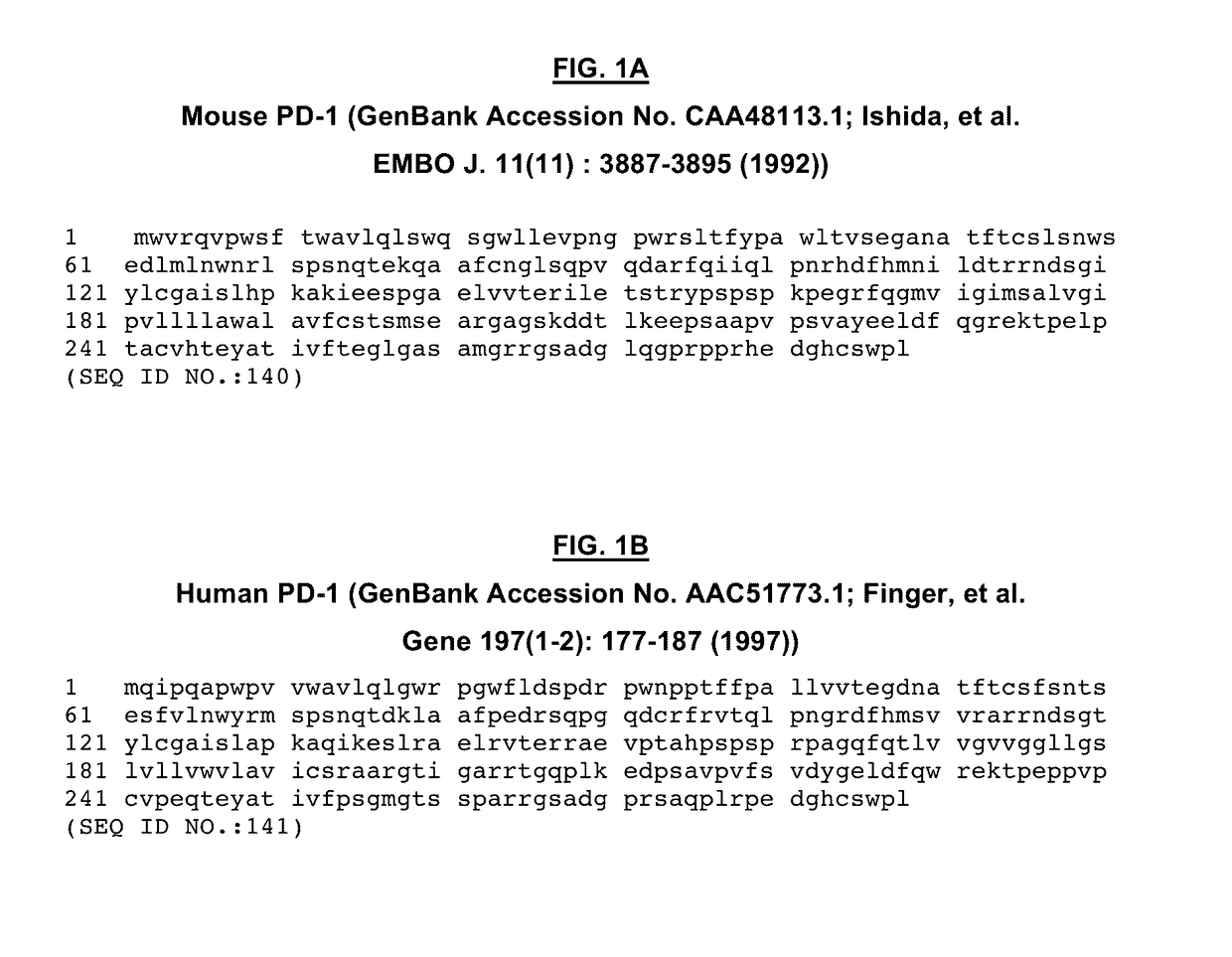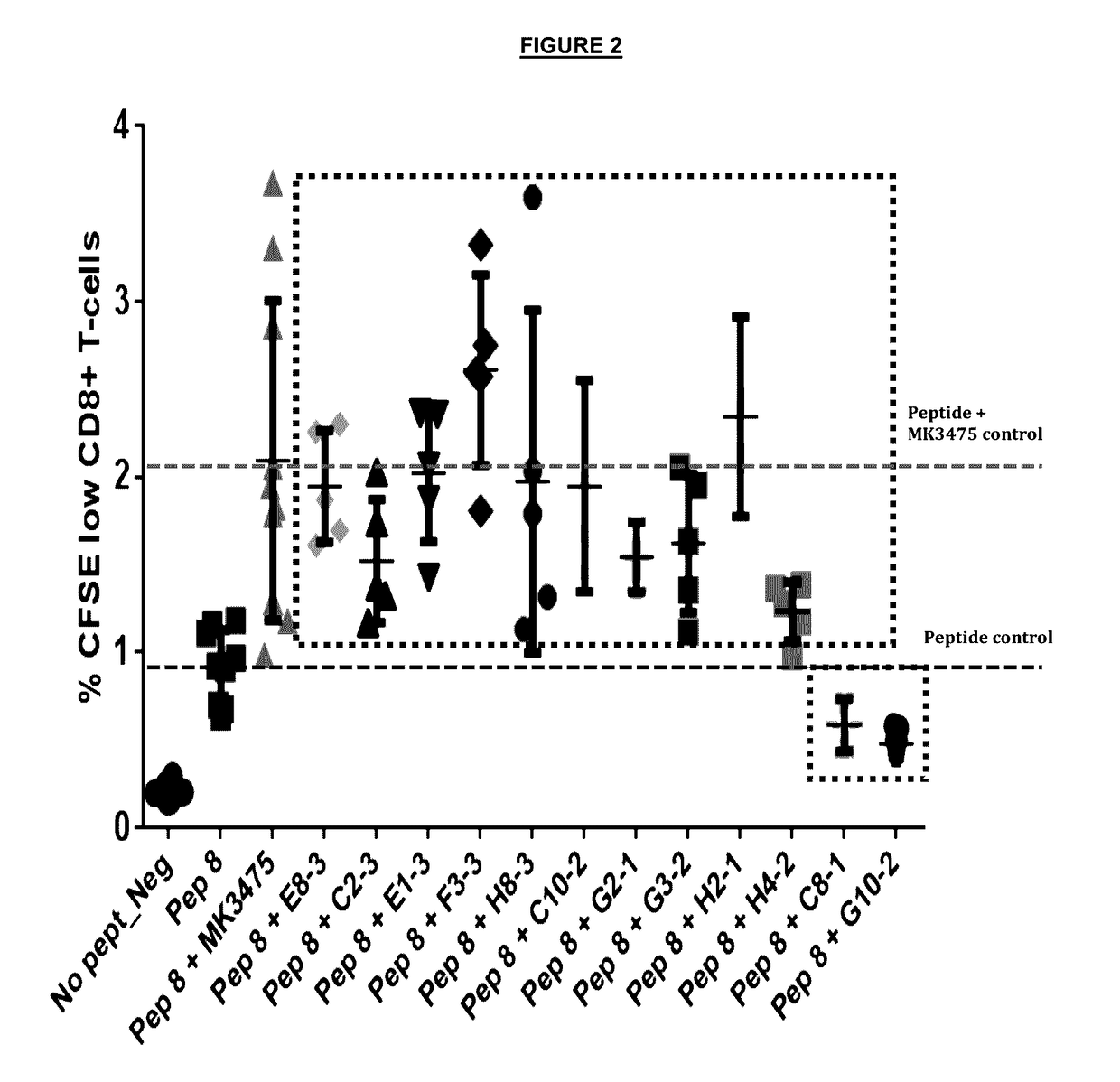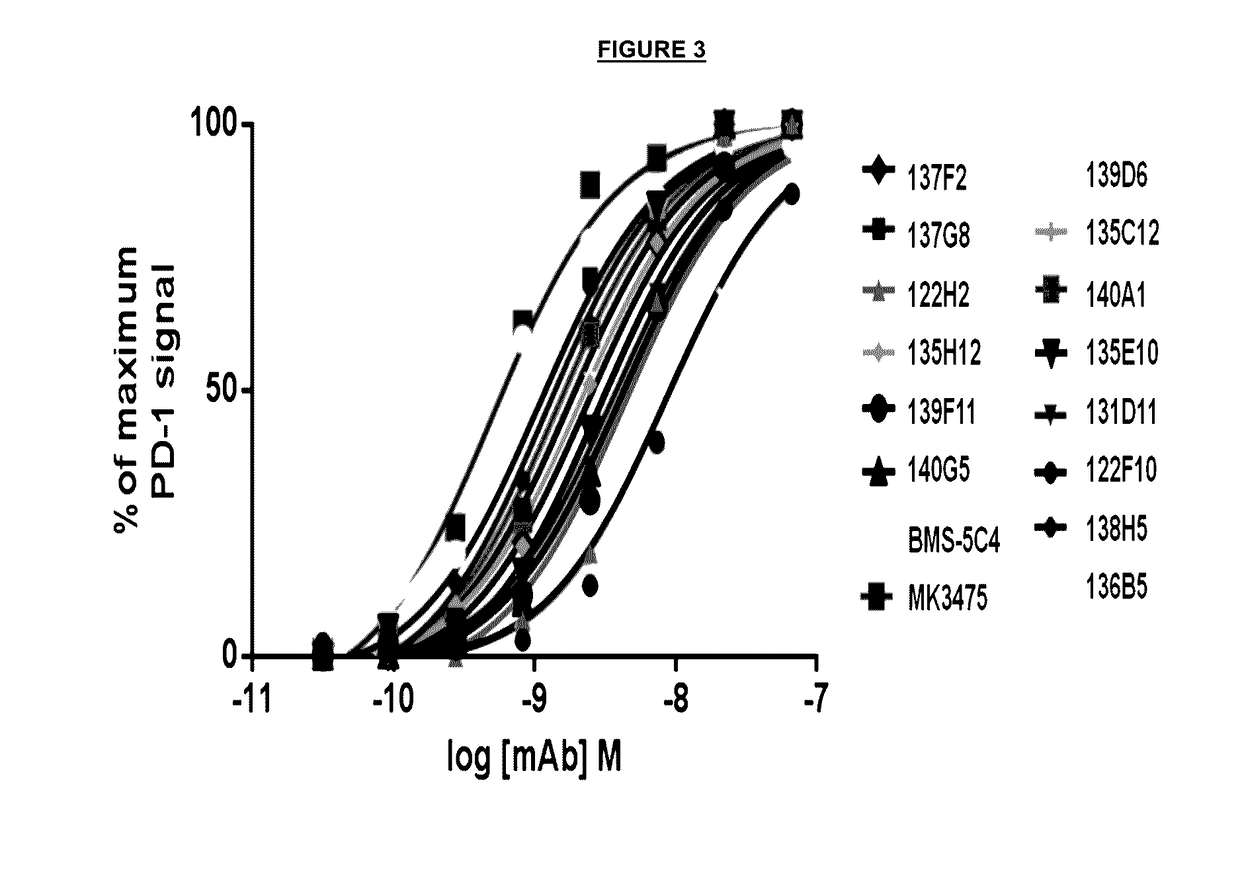Immunological Reagents
- Summary
- Abstract
- Description
- Claims
- Application Information
AI Technical Summary
Benefits of technology
Problems solved by technology
Method used
Image
Examples
example 1
Generation and Characterization of PD-1 Binding Agents
[0108]Four mice strains (total of 16 mice) have been immunized with two PD-1 proteins, i.e. human PD-1 Fc fusion protein and a human PD-1 monomeric protein. Mice showing serum reactivity to PD-1 expressed on activated human T lymphocytes have been selected for generation of anti-PD-1 hybridoma cell lines. A total of 240 PD-1 hybridoma cell lines were selected for producing antibodies that bind to recombinant PD-1 protein. The primary criteria for the first round of antibodies selection were: i) staining of PD-1 on activated human T lymphocytes by flow cytometry; ii) diversity of CDR VH and VL sequences as compared to those of the existing anti-PD-1 antibodies; and, iii) epitope mapping performed by competitive binding studies with PD-1 conjugated Luminex beads with two commercially available anti-PD-1 antibodies binding to different epitopes on PD-1. A second round of selection was then carried out by: iv) affinity binding assays...
example 2
Antibody Combinations
[0111]Combinations of antibodies binding to different PD-1 epitopes were found to enhance restoration of HIV peptide specific CD8 T-cell proliferation in a functional exhaustion recovery assay (FIG. 8). Synergy between antibody types was also observed. For instance, it was determined that class 1 (MK-3475 in FIG. 8) and class 2 (139D6 in FIG. 8) antibodies are able to simultaneously bind PD-1. While the maximum stimulation observed for MK-3475 is consistently about 200% relative to the HIV peptide, combinations of MK-3475 and 139D6 monoclonal antibodies at 5 μg / ml exhibited synergy with a 288% increase in HIV-specific CD8 T cell proliferation relative to the HIV peptide control alone or a 144% increased proliferation relative to MK-3475 or 139D6 added alone (FIG. 8). This synergistic increase in proliferation was observed in several experimental tests with a statistically significant p value of 0.007. As a comparison, addition of 10 μg / ml of either MK-3475 or 13...
example 3
Epitope Mapping of Anti-PD-1 Antibodies
[0112]Preliminary epitope mapping evaluations relied on biochemical competitive binding assay studies between commercially available anti-PD-1 antibodies (EH12.2H3 and J116) and the newly identified anti-PD-1 antibodies defined in this patent. This procedure allowed us to categorize the antibodies into one of four binding classes based on binding competitively or non-competitively with either of the two commercial antibodies. A more precise method of defining the antibody binding epitopes on PD-1 is to monitor the interaction of the antibody with different PD-1 proteins that have discreet amino acid substitutions at solvent accessible residues. If these residues are important for tight binding of the anti-PD-1 antibodies, the substitution can result in a reduced binding for the PD-1 protein. These studies were performed by site directed mutagenesis of the PD-1 gene encoded within the pReceiver-M67 mammalian expression vector under the control o...
PUM
| Property | Measurement | Unit |
|---|---|---|
| Current | aaaaa | aaaaa |
| Digital information | aaaaa | aaaaa |
| Molar density | aaaaa | aaaaa |
Abstract
Description
Claims
Application Information
 Login to View More
Login to View More - R&D
- Intellectual Property
- Life Sciences
- Materials
- Tech Scout
- Unparalleled Data Quality
- Higher Quality Content
- 60% Fewer Hallucinations
Browse by: Latest US Patents, China's latest patents, Technical Efficacy Thesaurus, Application Domain, Technology Topic, Popular Technical Reports.
© 2025 PatSnap. All rights reserved.Legal|Privacy policy|Modern Slavery Act Transparency Statement|Sitemap|About US| Contact US: help@patsnap.com



